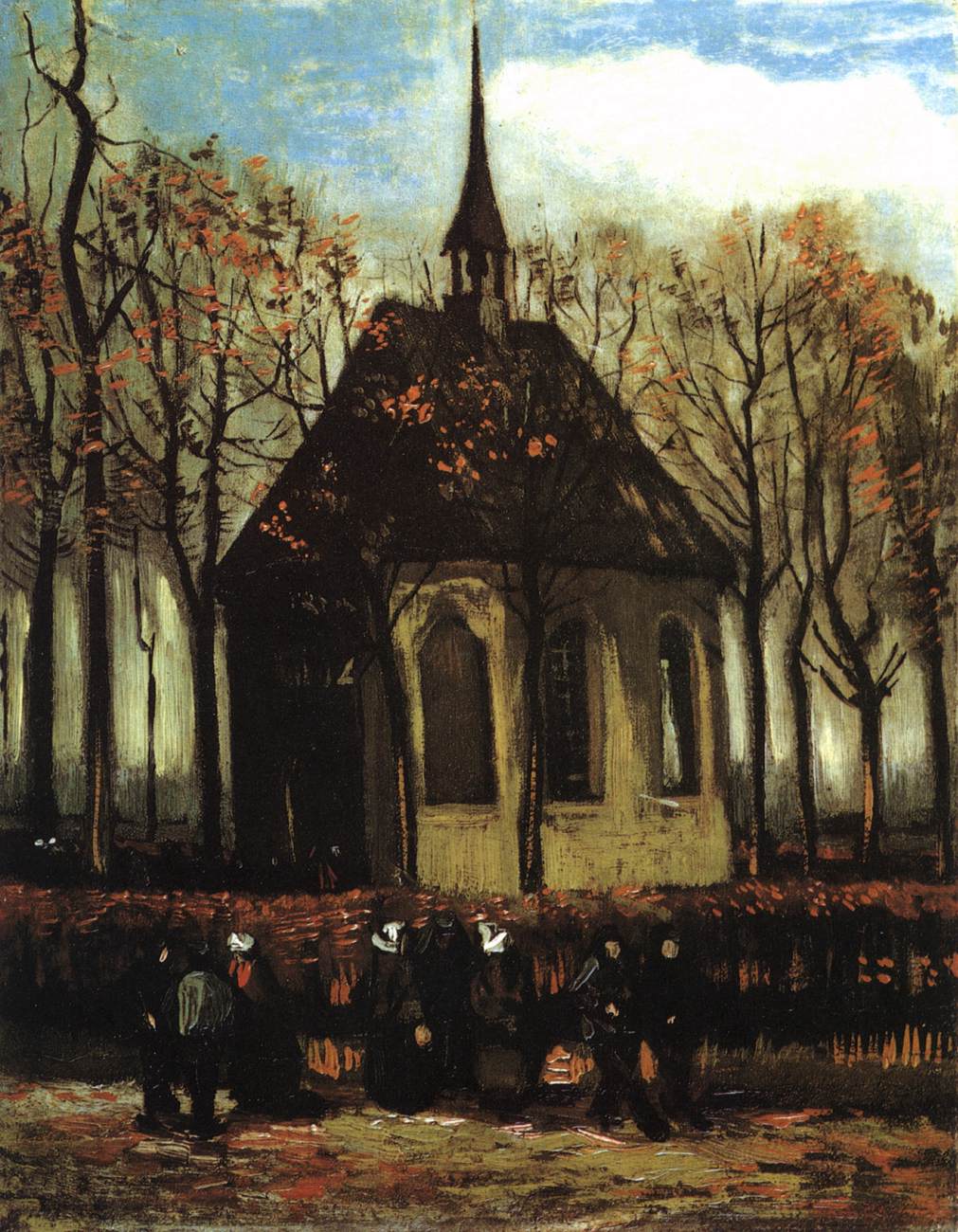Description
The painting Chapel at Nuenen with Churchgoers by Vincent Van Gogh is a work that stands out for its unique artistic style and detailed composition. The artist uses expressive and vibrant brushstrokes to create an atmosphere of movement and life in the scene.
The composition of the painting is asymmetrical, with the church and chapel located on the left side of the work and the crowd of parishioners on the right side. This arrangement creates an interesting visual balance and allows the viewer to focus on the details of the church and the characters.
Color is another prominent aspect of the painting. Van Gogh uses a vibrant and contrasting palette, with warm and cool tones blending together to create a sense of depth and texture. The yellow and gold tones in the church and the sky contrast with the blue and green tones of the trees and fields.
The story behind the painting is also fascinating. Van Gogh painted this work while living in Nuenen, a small village in the Netherlands, where his father was a religious minister. The church and chapel depicted in the painting were important places for the local community and the work reflects the daily life of the people of the village.
A little known aspect of the painting is that Van Gogh added several of his friends and family as characters in the work. His sister Willemien and his friend Anthon van Rappard are recognizable in the crowd of parishioners.
In short, Chapel at Nuenen with Churchgoers is an impressive work of art noted for its unique artistic style, detailed composition, use of color, and fascinating history. It is a work that continues to captivate viewers and is a perfect example of Vincent Van Gogh's skill and talent.

